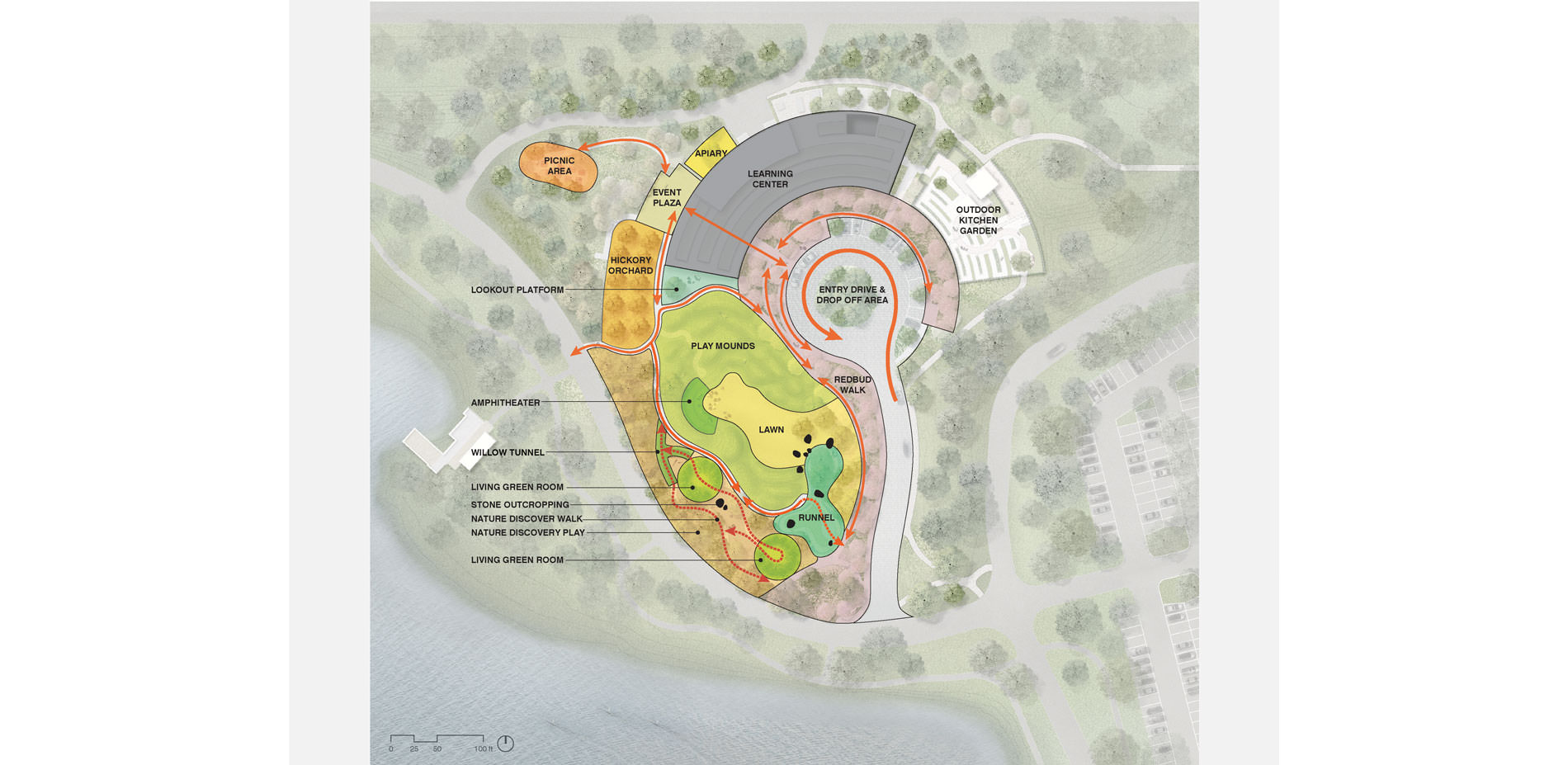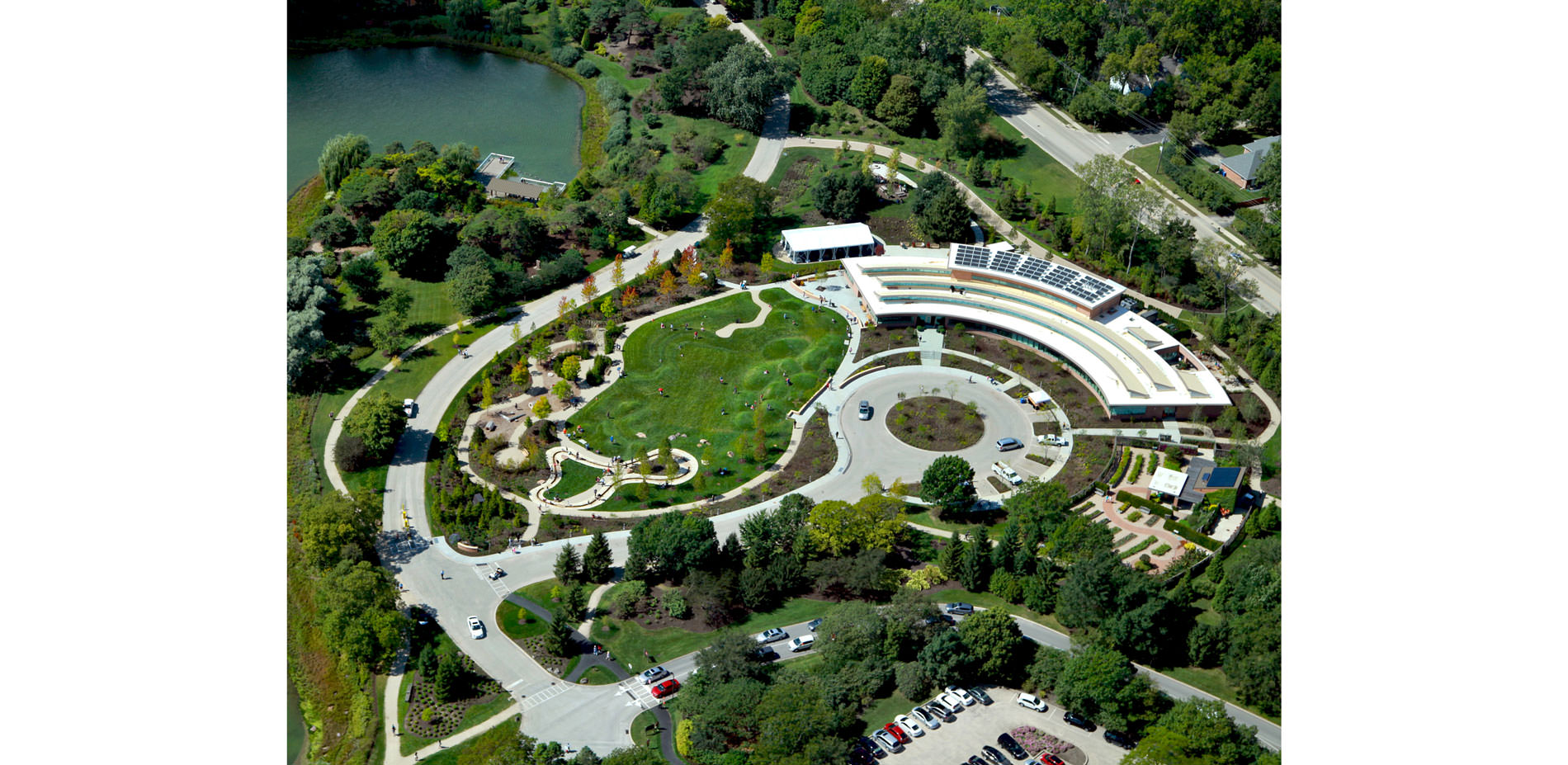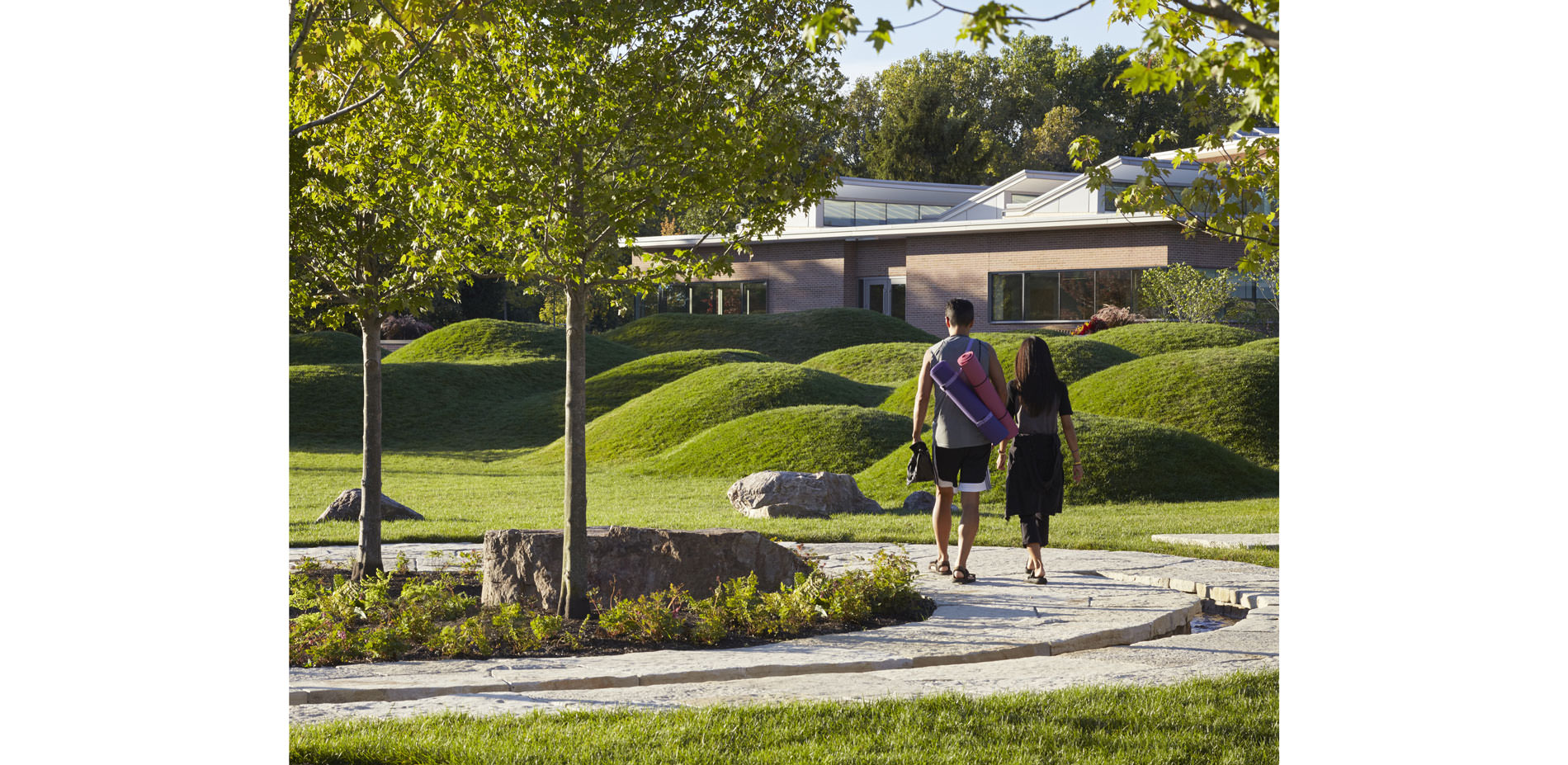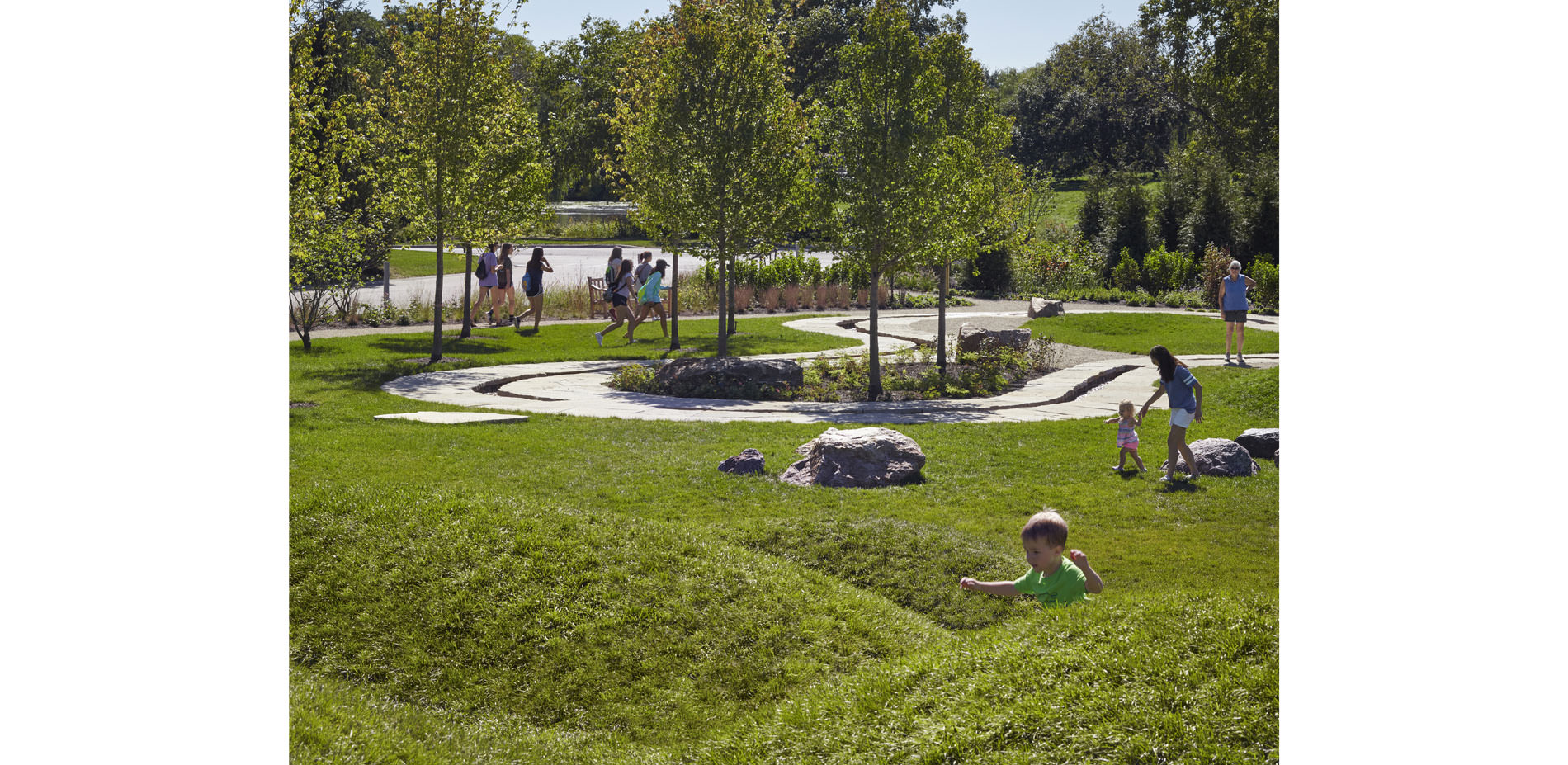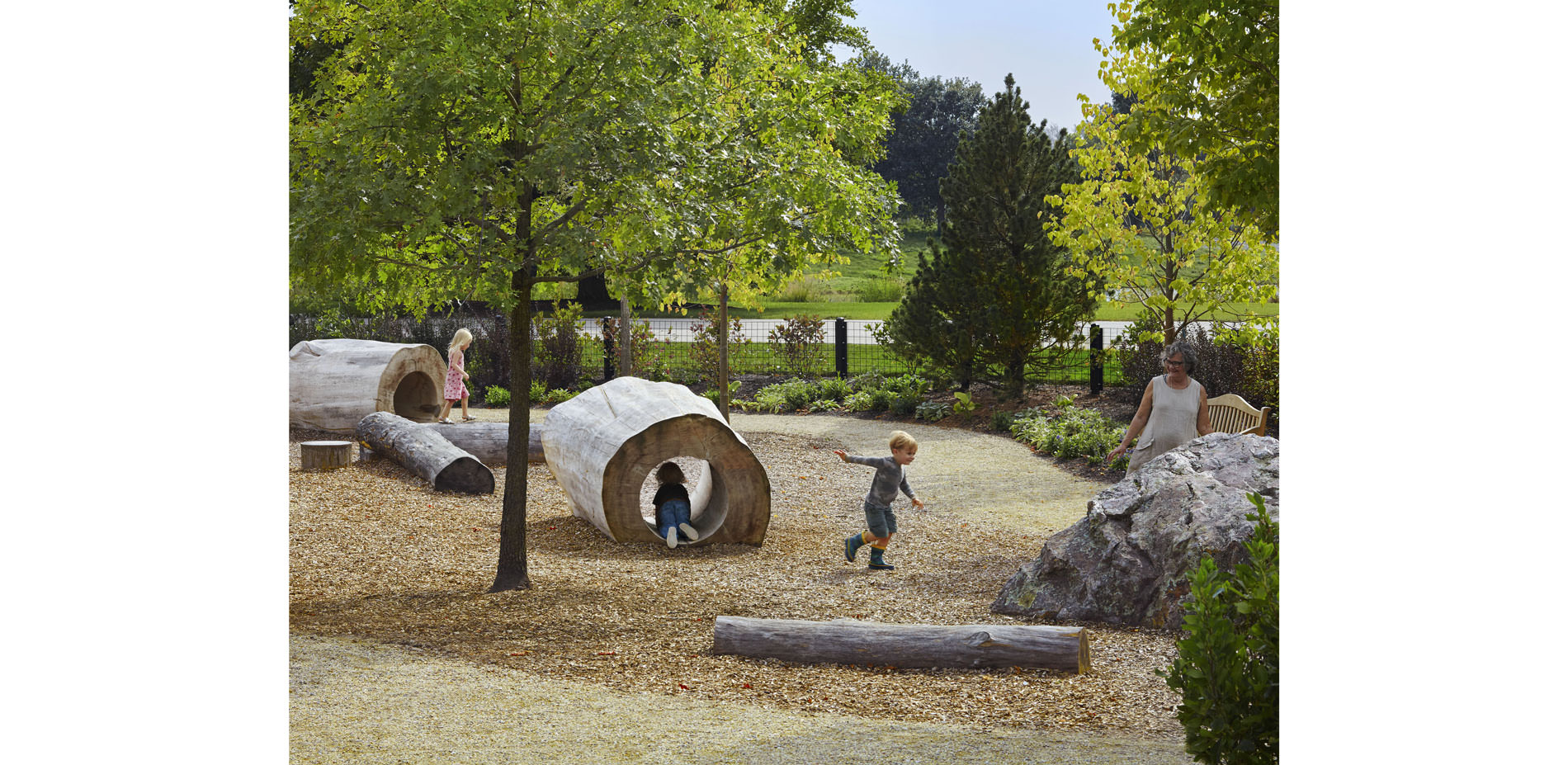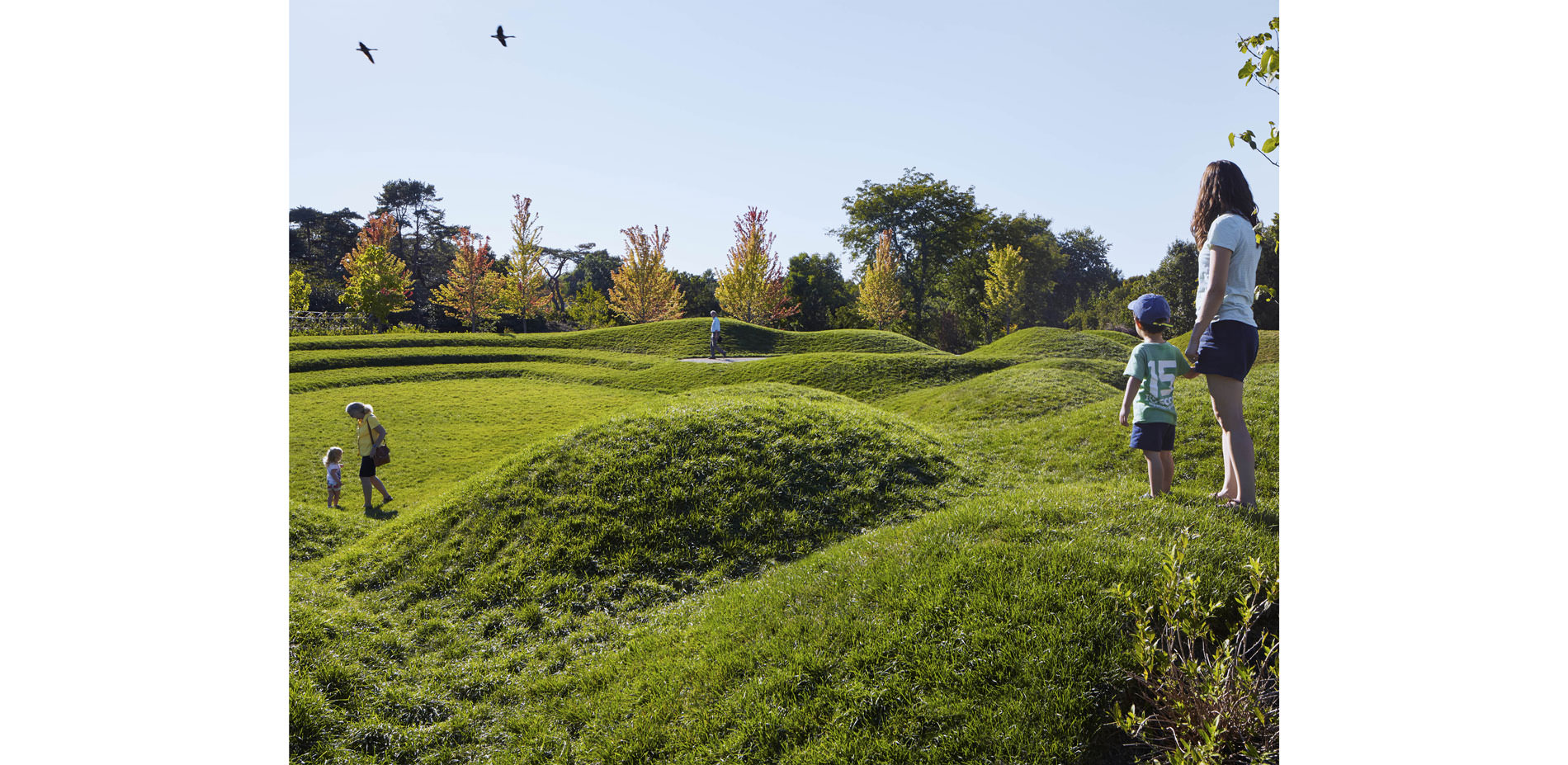Chicago Botanic Garden: The Regenstein Learning Campus
Honor
General Design
Chicago, IL, USA | Mikyoung Kim Design and Jacobs/Ryan Associates | Client: Chicago Botanic Garden
The project presents landscape architects as artists.
- 2017 Awards Jury
PROJECT CREDITS
Landscape Architect – Mikyoung Kim Design and Jacobs/Ryan Associates
- Mikyoung Kim Design
- Mikyoung Kim, FASLA, Principal
- Bryan Chou, ASLA, Design Principal + Senior Associate
- Ian Downing, ASLA, Senior Associate
- Eunjee Kim, ASLA, Design Associate
- Joseph Meucci, Associate
- Cody Storey, Design Associate
Jacobs/Ryan Associates
- Terry Warriner Ryan, FASLA PLA – Partner Landscape Architect
- Adam White, ASLA PLA – Associate Landscape Architect
- Christopher Gent, ASLA – Associate Landscape Architect
- Scott Preston – Associate Landscape Designer
- Matthew Houser – Associate Landscape Designer
Landscape Subcontractor – Clauss Brothers, Inc.
- Architect – Booth Hansen
- Civil Engineer – Gewalt Hamilton
- General Contractor – Turner Construction
- Runnel Contractor – Masonry by Fernando
- Fountain Mechanical – HydroDramatics
PROJECT STATEMENT
The Regenstein Learning Campus is a new environmental discovery center and nature playground at the Chicago Botanic Garden. This six-acre horticultural campus serves a vibrant community of families, offering an interactive experience with the natural world, while advancing the institution’s influence as a science and horticultural center that serves more than 125,000 people each year. The design immerses families and children of all ages to a variety of outdoor experiences that include inquiry focused learning and play that engenders a deeper understanding of ecological systems. The expansive garden includes a variety of natural experiences and explorations as visitors weave through the grassy mounds, water-play runnel, boulders, diverse woodland plantings and willow tunnels. This regenerative project is envisioned as a gateway to the natural world; one that highlights creative discovery in all seasons.
PROJECT NARRATIVE
The Regenstein Learning Campus is a new environmental discovery center and nature playground at the Chicago Botanic Garden. Linking to the new Learning Center building, this six-acre landscape serves a vibrant community of families, offering an interactive experience with the natural world. The design for this complex advances the institution’s influence in the region as a science, horticultural and educational center that serves more than 125,000 people each year. The landscape immerses families and children of all ages to a variety of outdoor experiences that include inquiry focused learning and play that engenders a deeper understanding of ecological systems. Diversity defines the experiences within this garden as visitors weave through the grassy mounds, water-play runnel, a woody and herbaceous plant selection that expanded the Garden’s collection, natural boulders, and willow tunnels. This regenerative project is envisioned as a gateway to the natural world; one that highlights creative discovery in all seasons.
The design of the campus demonstrates nature education and ecological stewardship through various landscape destinations and outdoor classroom opportunities. The organization of the spaces link the interior with the surrounding landscape, creating an environment that is a tangible and dynamic part of the environmental curriculum. Programming includes educational classes on botany, the culinary arts, garden design, horticulture, photography, bird watching, and wellness. The campus focuses on youth and family programming, including a Nature Pre-school, a summer camp for toddlers to teens, and Scout Programs for kids of all ages. Campout programming in the central space allows for visitors to stay overnight for events such as nocturnal creature and reptile viewing.
As an educational landscape, the garden has many engaging elements that naturally bridge the transition between play and intuitive experiential learning. The large lawn area begins with upland play mounds and leads to a lowland fountain fed from the adjacent lake. These sculptural landforms define the character of the central space and reinforce the concept of “dignity of risk” where children of all ages and abilities are safe but have the opportunity to play and discover in active ways. Rolling hillocks merge into a green amphitheater that accommodates public gatherings and evening events. Open exploration through the Nature Play Garden and the Multi-sensory Discovery Garden allows for visitors to develop a greater understanding of ecological systems as well as the diverse plant palette of the region. Other places of ecological discovery include an apiary and butterly exhibition tent, a grove of redbud trees that define the entry experience, the arborvitae contemplative room, and the hornbeam council ring. The tree species includes a diverse planting of maples, aspens and perennials that form the discovery gardens.
A variety of ecological typologies and natural woodland plant communities are established along the perimeter of the garden that link to active elements within the core of the campus. Explorers can walk through a willow tunnel, immerse themselves in an arborvitae contemplative room or commune with others in a hornbeam council ring. Other experiences in the garden invites children to touch and feel by climbing on stone boulders, crawl through hollowed out wood logs, or splash through a stream water feature. These multisensory experiences challenge visitors to engage the garden through the seasons and during the day and at night. The upper garden adjacent to the Learning Center includes an apiary, a butterfly garden, outdoor classroom spaces for art and gardening instruction. A large terrace from the building entry has a vista to the landform garden and is used for yoga and tai-chi classes. A meandering pathway was designed around an existing Norway Spruce and large overcup Oak Tree and leads to a secret garden with a fire pit, log benches and picnic tables. Transplanted Freeman maples bring character to this space.
Sustainability drove the design of the runnels, the stone bridges, the fire pit and the upper paved terrace. Local and regional materials from the Midwest were sourced for the play runnel, providing a cooling oasis during the summer months. A central boulder fountain within the runnel offers children of all abilities to engage the water. Reclaimed logs were carved to create moments of play for children to crawl and hide and seek. Regionally sourced boulders offer moments of discovery throughout the landscape. Rain gardens in the Northwest corner of the garden provide additional opportunites for discovery and learning while addressing important stormwater management issues.
The campus links to two previously existing amenities to create a larger learning environment. To the Northeast is the Grunsfeld Growing Garden which houses a herb and culinary garden. To the West, the campus links to the Kleinman Family Cove, an aquatics learning center for families and children. Together these three distinct learning environment now read as one experience providing a rich and highly programmed learning center for the Chicago Botanic Garden; one that is as much about touching, smelling and feeling as it is about visual beauty.
Discovery and imagination are emphasized in the vision of this design, offering visitors fertile ground for the expansion of the mind and body. The conception of the Regenstein Learning Campus emerged from a share concern about the increasingly distant relationship of children to nature as they are further plugged into the digital world. This new garden is an important first step in providing a place of learning by doing as it encourages direction engagement with the natural cycles of nature and reconnects our youth to the ecological world.
PRODUCTS
Product Sources: FURNITURE
- Shackleton Thomas - Benches
Product Sources: IRRIGATION
Product Sources: HARDSCAPE
- Unilock - Permeable Pavers
Product Sources: LIGHTING
- Louis Poulsen - Light Bollards
Product Sources: OTHER
- Silva Cell - Plastic Chamber Units


